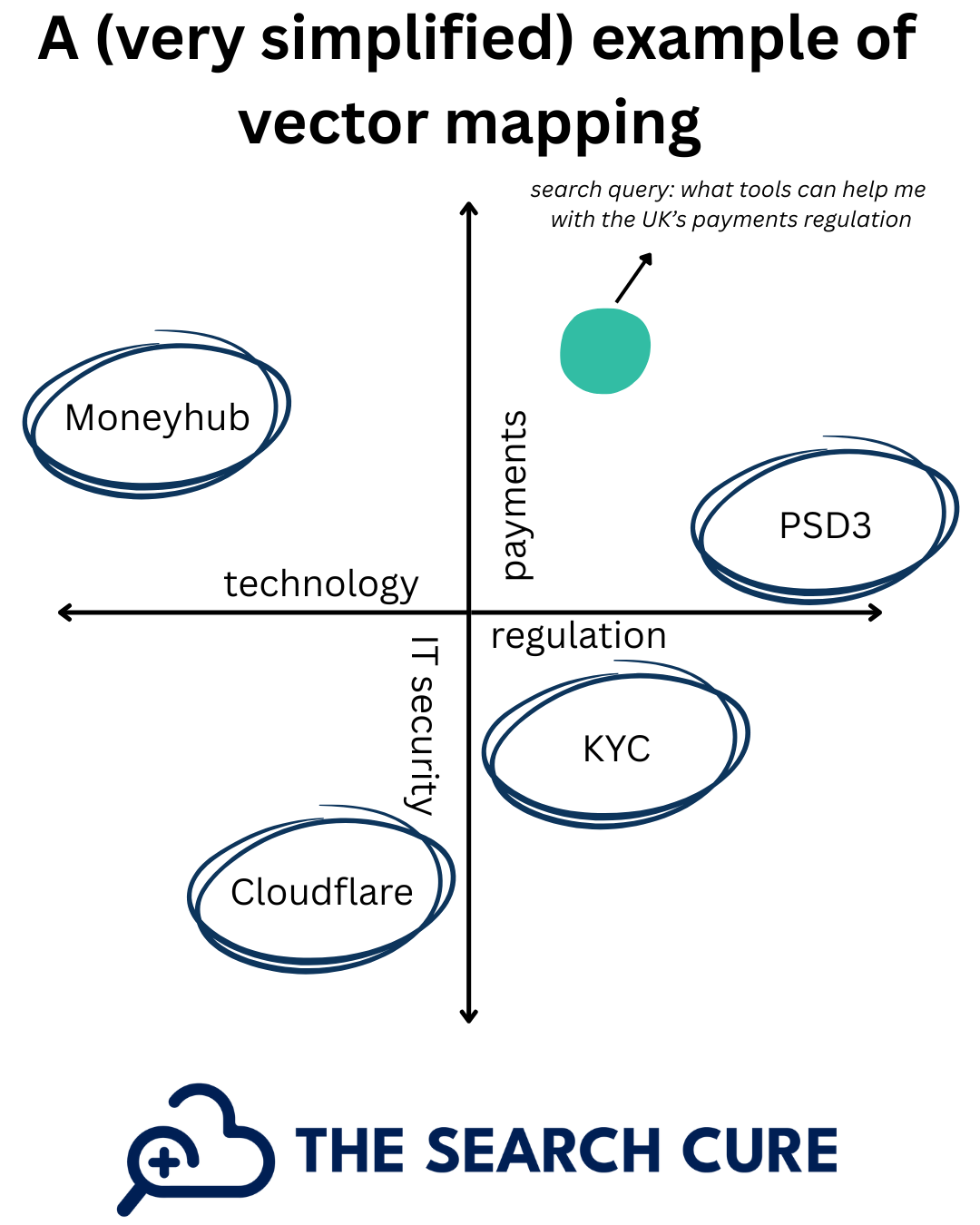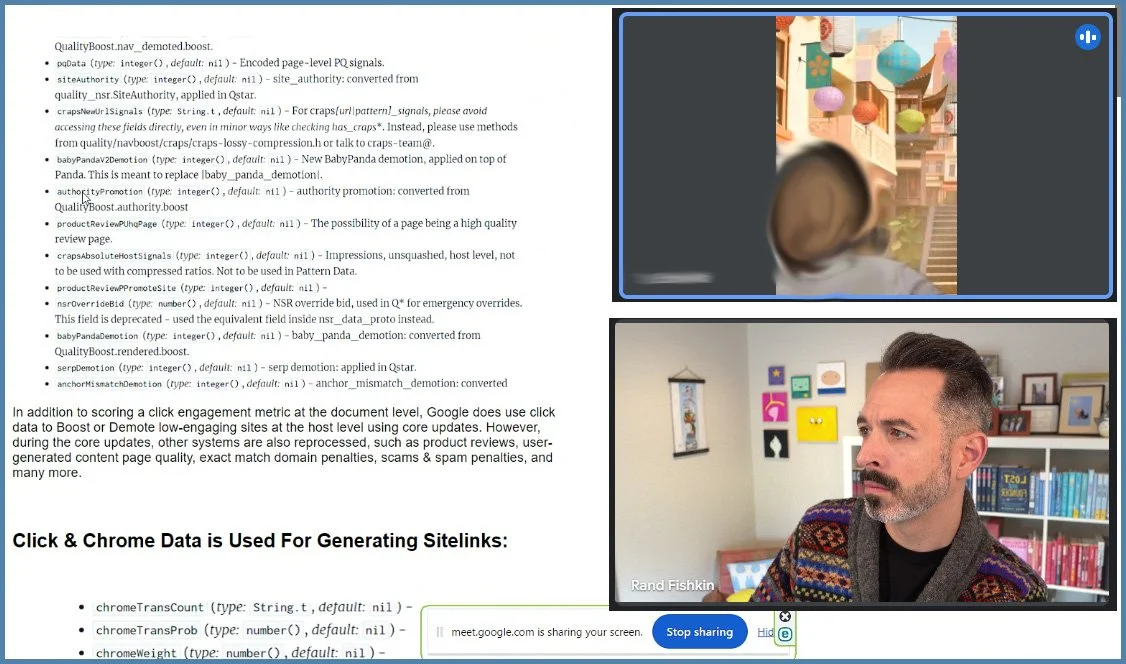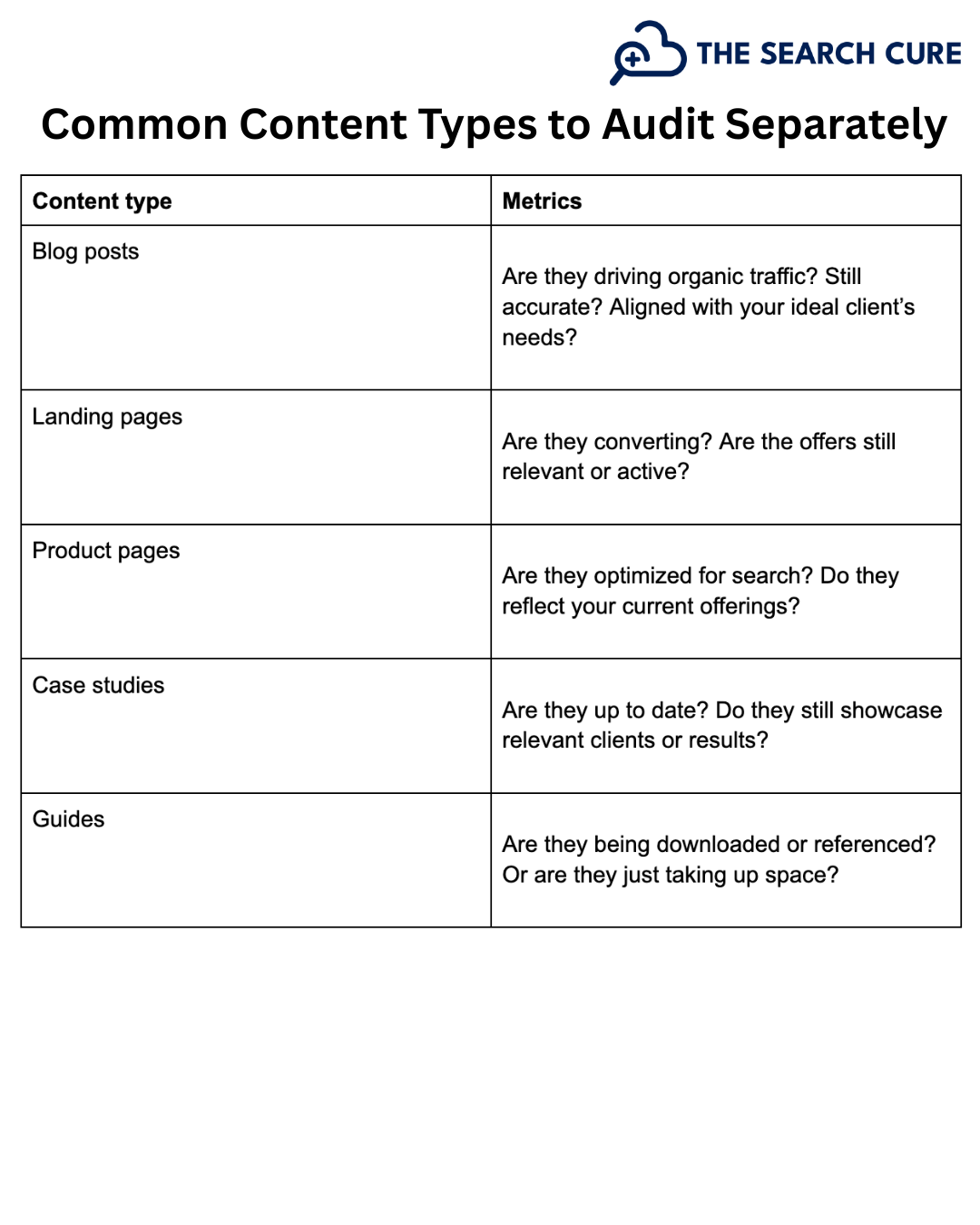Content Pruning: How to KonMari your website
Pruning a fintech/ regtech website is not for the faint of heart. Here’s how to get it done effectively.
Does it spark joy?
Marie Kondo’s ruthless clear out method might be a bit too nuanced for website content. But her principles can help guide marketing managers to purge their underperforming content, and double down on the opportunities, without hesitation.
Content pruning makes up part of the wider content audit, which is a chance for marketers to pause and take stock of how their strategy is performing, and where to go next.
What is Content Pruning?
Content pruning is the process of reviewing, updating and deleting content to improve a website’s seo performance.
It’s a necessary part of any content strategy because it helps teams to hone in on relevance - which is a ranking factor.
“But the algorithm is a closely-guarded secret, how on earth could you possibly know that this pruning stuff makes any real difference?” I hear you ask.
Well, in this next section, we’ll go through the theory behind pruning, and we’ll go through the leaked Google data to prove its effectiveness.
Here’s the technical seo explanation on content pruning
SERPs (the search result pages for any given phrase) are decided on based on vector mapping. This is the idea that search engines have their own universe and create a set co-ordinates for your site, giving it a ‘virtual location’ in the universe.
When a searcher types something into google, it’s also classified by co-ordinates and traditionally, the ten ‘closest’ pages within the universe map were shown in search results. The order of results is decided algorithmically, but the website’s relevance and quality plays a key part. Of course, some of these results have been replaced over time by ads, and in 2025 by AI overviews - but that’s a different topic.
Pruning for quality
Pruning enables websites to get rid of low quality content, bringing its overall quality score up. This is more important to the algorithm than having a high volume of low quality content.
Pruning for relevance
I recently attended a talk by Mike King, CEO of ipullrank, where he introduced the concept of seo’s needing to become ‘relevance engineers’ thanks to algorithmic changes.
This concept is especially important now that we are entering into the generative search era, because semantic understanding is becoming just as important as literal matching for seo. Thankfully, pruning reduces the range of topics and keywords that your website is associated with, increasing its relevance for the fewer keywords that you’re targeting.
By pruning content that doesn’t focus on the primary purpose and topics of your website, it reduces the impact of this irrelevant noise on your vector data. This means that your pages and site will be mapped more accurately to its true co-ordinates, and is more likely to show up for relevant search terms, given that you’ve nailed the other principles of seo.
Google’s leaks show authority and reputation are key ranking factors
In May 2024, 2,500 pages of internal Google API documentation was leaked to SparkToro’s CEO, Rand Fishkin. He pulled Mike in to start analysing the documents, and declared findings that directly contradicted public statements made by Googlers over the years.
Thanks to Rand Fiskhkin for this screenshot
There are loads of findings, and I recommend anyone interested to read the full report to understand more about the 14k ranking factors. But we’re only focusing on content pruning here, and I think this take from content agency Animalz says it best:
“Your site is as strong as your weakest content: A few stellar pages don’t compensate for mediocre content. Google's "site authority" and "site reputation" scores evaluate your entire domain. Prioritize quality control and content pruning to maintain high standards across all your pages.”
Inflow: A classic case study on pruning
Inflow collaborated with an online store to audit and prune low-performing blog content. By deindexing or removing pages with minimal traffic, conversions and backlinks, the site achieved:
A 64% increase in revenue from strategic blog content
A 104% rise in organic sessions
A 102% boost in transactions
These improvements were tracked without adding any new content to the store’s website, highlighting the effectiveness of content pruning in enhancing SEO and user engagement.
Ok, now we know just how important pruning is, let’s dive into how to do it effectively by following the KonMari cleaning method.
Applying the principles of KonMari to content pruning
Marie Kondo first rose to fame in 2010 when her book, ‘The Life-Changing Magic of Tidying Up’, won its first award. But it wasn’t until 2019, when Marie landed on Netflix, that she achieved virality, with many viewers calling the KonMari method, “life changing”.
According to Marie’s website, the method “is a simple but effective organizing system”, based on six key principles:
Commit to tidying
Imagine your ideal lifestyle
Finish discarding first
Tidy by category, not location
Follow the right order
Ask yourself if it sparks joy
Today, we’re going to apply those principles to your content pruning, digging into how to measure content performance, knowing when to discard versus when to ‘upcycle’, and why less content might actually improve your performance.
1. Commit to a bi-annual audit
Commitment to regular auditing, and therefore, regular pruning, is an important first step in any content strategy. It allows you to zoom out of working ‘in’ the business, and start working ‘on’ it.
The case for committing to regular audits is clear: companies who perform content audits experience an average engagement increase of 53%, and a 49% increase in traffic from organic search.
If your workplace is busy, and ‘more important’ (read: more obviously value-adding) tasks are going to be thrust onto your plate, then literally mark out the time in your calendar to ensure that regular auditing, and therefore pruning, is taken care of.
2. Imagine your ideal client
Picture your ideal client landing on your website for the first time. They’re searching for a solution, scanning for clarity, and expecting value, fast. Now ask yourself: are they being guided to your most relevant, helpful, and high-converting content? Or are they getting lost in a sea of outdated blog posts, irrelevant pages, and thin content that no longer serves a purpose?
The key to resonating? Specificity.
Start with performance metrics. Look at organic traffic, bounce rate, time on page, and conversions. If a page gets little to no traffic, doesn’t engage users, or never contributes to sales or leads, it’s a red flag.
Then check for alignment with client needs. Ask: does this content solve a real problem for my ideal client?
If it’s outdated, overly general, or off-topic from your current offerings, it may no longer align with your audience’s needs or your business goals.
Finally, ask your audience. Don’t underestimate the power of direct feedback. Use surveys, client interviews, or even on-site polls to find out what content your audience finds valuable (and what they ignore).
It’s much better to be the big fish in the small pond - opting for a low volume phrase which will match search intent and create conversions, than spraying and praying.
3. Discard ruthlessly first
Discarding ruthlessly means taking the emotion out of the decision making, which leaves space for data to become your best friend.
Of course, Analytics and Search Console are great places to start. But I think that Hubspot is the strongest tool here. While it’s less granular than analytics, Hubspot connects website activity with individual users, tracking their journey across email, forms, campaigns, and your CRM. It provides a much more rounded view of the customer journey, and provides insight into where users interact with the different pieces of content on your site within that journey.
Remove or deindex anything outdated, duplicated, or misaligned with your brand or your audience’s intent. Think of it as weeding a garden: the sooner you clear out what no longer grows, the faster your best content can thrive.
Discarding frees up your crawl budget
In 2024, tech news publisher CNET decided to delete hundreds of thousands of website pages in a bid to improve search performance. It resulted in a 29% increase in search traffic!
Investigations into the traffic surge show that this does seem to be thanks to the pruning, with search engines like Google being able to spend their crawling budget more efficiently by focusing on the high-quality pages.
But there’s a caveat if you’re thinking you can repeat these results, as I recently attended a talk by Barry Adams who noted that crawl budget only really starts to run out when sites have hundreds of thousands of pages. So while pruning for quality is definitely best practice, you can’t expect to achieve the same instant uptick in search traffic.
Thanks to seo.ai for the image
4. Audit by content type, not topic
Different content types serve different purposes; and they perform differently. A blog post meant to educate behaves differently from a landing page built to convert. An outdated how-to guide might still bring traffic, while a low-quality testimonial page could be hurting trust. By grouping your content by type, you can apply more focused, relevant criteria for pruning.
That’s why content type matters more.
By grouping your pages into categories based on their format and function, you can review each group with its own success criteria in mind. You can directly compare between pieces in the same category, creating your own benchmarks. You’ll prune faster, more confidently, and with better long-term results.
5. Follow a logical plan
A logical, repeatable workflow keeps your pruning efforts focused and effective. So at the end of your analysis, you’ll need to take one of four possible next actions:
1. Keep
2. Delete
3. Update
4. Merge
This step was very important to Emilia Korczynska, VP of Marketing at UserPilot, who undertook an extensive pruning project in the final quarter of 2024. Here’s an insight into the logical plan that she followed:
“First of all, we had to decide what we meant by "underperforming":
Content that was not driving any conversions - we had 1 conversion in a year from these 847 posts…
Content that was driving hardly any traffic - 665 out of these 847 posts drove less than 10 visits per month in the last 8 months.
Content that had no Backlinks and was optimized for Zero-Search KWs or KWs with Low Search Value (SV) - Many posts had no significant backlinks or organic search volume - some were produced programmatically as part of our "Zero Search Volume experiment" in 2022-23 - but what worked back then, didn't seem to be working anymore.
Duplication and Redundancy - despite our efforts to avoid duplicate content, the SERP has changed over the years and some search intents which were considered separate at the time of writing, now were changed or merged. So we did have some duplicate or overlapping content on similar topics that now had to be merged or removed to reduce cannibalization.
Outdated or Irrelevant Content - Obviously, over the years some posts became outdated (e.g., event-driven content from 2020) or no longer relevant to the target audience or our current upmarket growth strategy (e.g. posts intended for small startups on a budget)”
This project was incredibly successful for the team at UserPilot. They ‘killed’ 23% of all content, resulting in traffic increasing by 16% in the months after.
6. Does it spark joy?
In the context of content, sparking joy doesn’t mean it has to be poetic or emotionally moving. Instead, it means the content:
Aligns with your brand, reflecting your voice, values, and mission.
Feels useful or impactful, providing real value to your ideal client.
Gives you confidence: you’d willingly share it with a prospect today.
Supports your goals, contributing to traffic, leads, engagement, or authority.
If a page feels outdated, bland, or disconnected from your current strategy (and the data doesn’t justify keeping it) it probably doesn’t “spark joy.” And just like in the KonMari method, that’s your sign to thank it for its service and let it go.
A practical add-on to your audit
During your content review, once you’ve gone through all the hard metrics, traffic, conversions, SEO value, pause and ask one more question:
Would I be excited to show this to a customer or client today?
If the answer is no, you’re probably looking at a prime candidate for removal, merging, or a major update.
Decluttering your content this way not only sharpens your site’s focus, it also creates space for more meaningful, higher-impact work to take the spotlight.
Content Pruning: an underrated action from your audit
The data is there for content pruning - it’s been proven time and time again to improve site traffic and engagement through increasing site relevance. Not only does pruning help the Google algorithm to accurately place your site in the correct vector co-ordinates, enabling it to show up for relevant search terms, but it also helps the human reader on the other end to trust the high quality, highly relevant content that remains.
Need help?
As an experienced content marketer in the fintech and regtech industries, I help clients with content pruning decisions, and the wider content audit and strategy, to improve seo and connect with the ideal client.
If you want to read more, read a case study or two to get an idea of the full scale in which I can make an impact.
Or get in touch using the form, and let’s chat about how I can help you.




